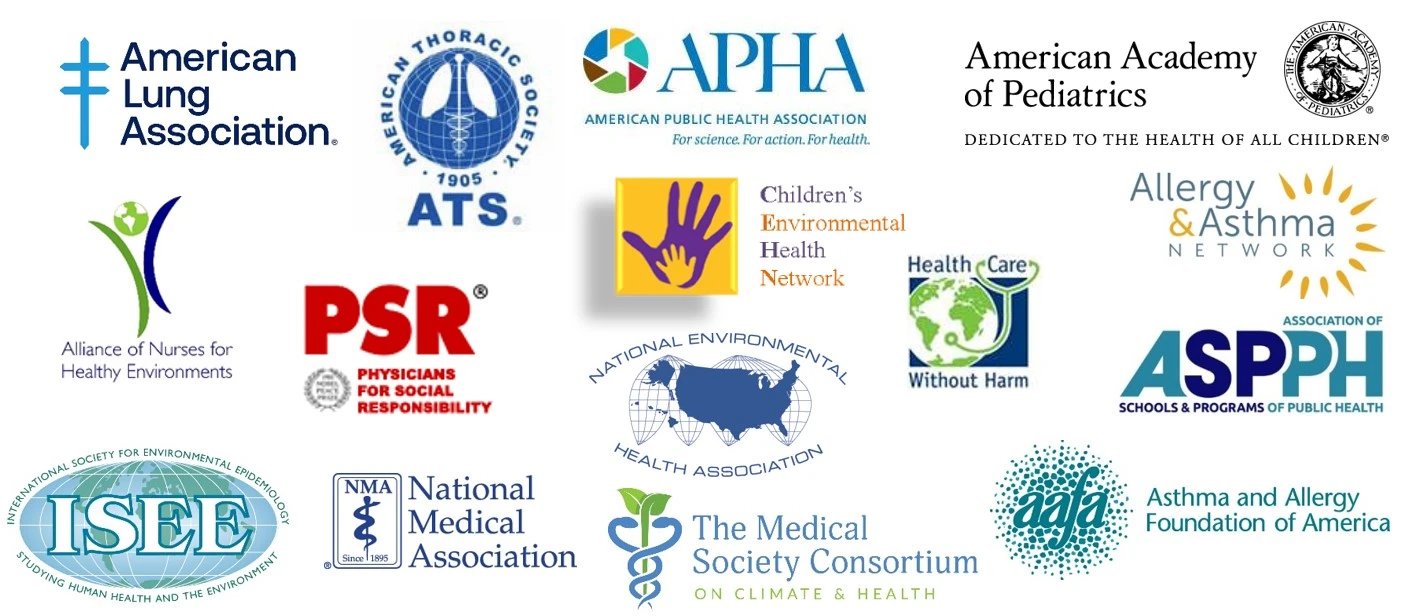WASHINGTON, D.C. | July 13, 2020
In response to the U.S. Environmental Protection Agency’s (EPA) proposal to maintain the current National Ambient Air Quality Standards for ozone pollution, the American Lung Association, Allergy & Asthma Network, Alliance of Nurses for Healthy Environments, American Academy of Pediatrics, American Public Health Association, American Thoracic Society, Association of Schools and Programs of Public Health, Asthma and Allergy Foundation of America, Children’s Environmental Health Network, Health Care Without Harm, International Society for Environmental Epidemiology -- North American Chapter, Medical Society Consortium on Climate and Health, National Environmental Health Association, National Medical Association, and Physicians for Social Responsibility issued the following statement:
“Without question, the nation needs stronger limits on ozone pollution to protect public health. We are disappointed with EPA’s proposal to keep the current, inadequate standard for this dangerous, widespread pollutant in place, and we call on the agency to follow the science and set stronger standards to protect public health, especially for the most vulnerable.
“EPA has proposed keeping the standard for ozone pollution. Yet, there is powerful, overwhelming evidence that shows that this standard is not adequate to protect the health of Americans. EPA’s proposal violates the core purpose of these standards under the Clean Air Act: to protect public health with an adequate margin of safety.
“Ozone pollution is dangerous. It can cause respiratory harm, asthma attacks, COPD exacerbations, heart attacks, strokes and premature death. Anyone can suffer health harms from breathing ozone pollution, but millions of people face greater risk – including the more than 16.4 million adults with COPD and more than 24.8 million Americans with asthma, of which 5.5 million are children. Communities of color, particularly Black Americans, face a greater risk from ozone pollution than White Americans.
“EPA’s proposal ignores the long-standing wealth of scientific evidence pointing to the need for a more protective standard. In 2014, the EPA’s Clean Air Scientific Advisory Committee concluded that at 70 parts per billion (ppb), ozone pollution can lead to increases in inflammation of the airways and a decrease in overall lung function. Research published in 2017 in the Journal of the American Medical Association also found strong evidence of increased mortality as a result of ozone pollution, with some risks occurring even at levels below the current standard. Two studies of Canadian cities found evidence of harm where the ozone levels remained below 70 ppb for 10 years. Even in these cities, where the air quality would have met the current standards, epidemiologists found ozone exposures associated with increased risk of emergency department visits for lower respiratory diseases and for childhood asthma.
“We urge EPA to listen to the best scientific evidence and the Clean Air Act and set the ozone pollution standard at no higher than 60 ppb to safeguard public health.”
###
The American Lung Association is the leading organization working to save lives by improving lung health and preventing lung disease through education, advocacy and research. The work of the American Lung Association is focused on four strategic imperatives: to defeat lung cancer; to champion clean air for all; to improve the quality of life for those with lung disease and their families; and to create a tobacco-free future. For more information about the American Lung Association, which has a 4-star rating from Charity Navigator and is a Platinum-Level GuideStar Member, call 1-800-LUNGUSA (1-800-586-4872) or visit: Lung.org. To support the work of the American Lung Association, find a local event at Lung.org/events.
For more information, contact:
Elizabeth Cook
312-801-7631
[email protected]
A Breath of Fresh Air in Your Inbox
Join over 700,000 people who receive the latest news about lung health, including research, lung disease, air quality, quitting tobacco, inspiring stories and more!
Thank You!
You will now receive email updates from the American Lung Association.


